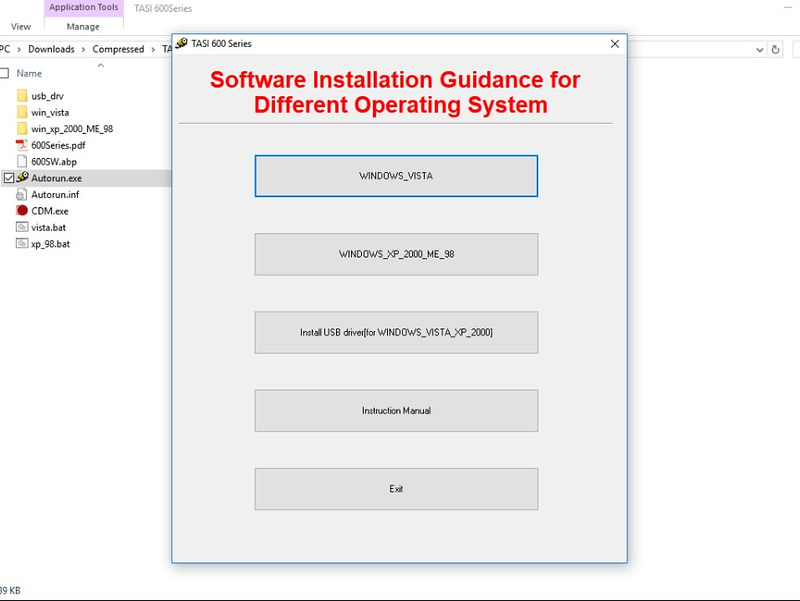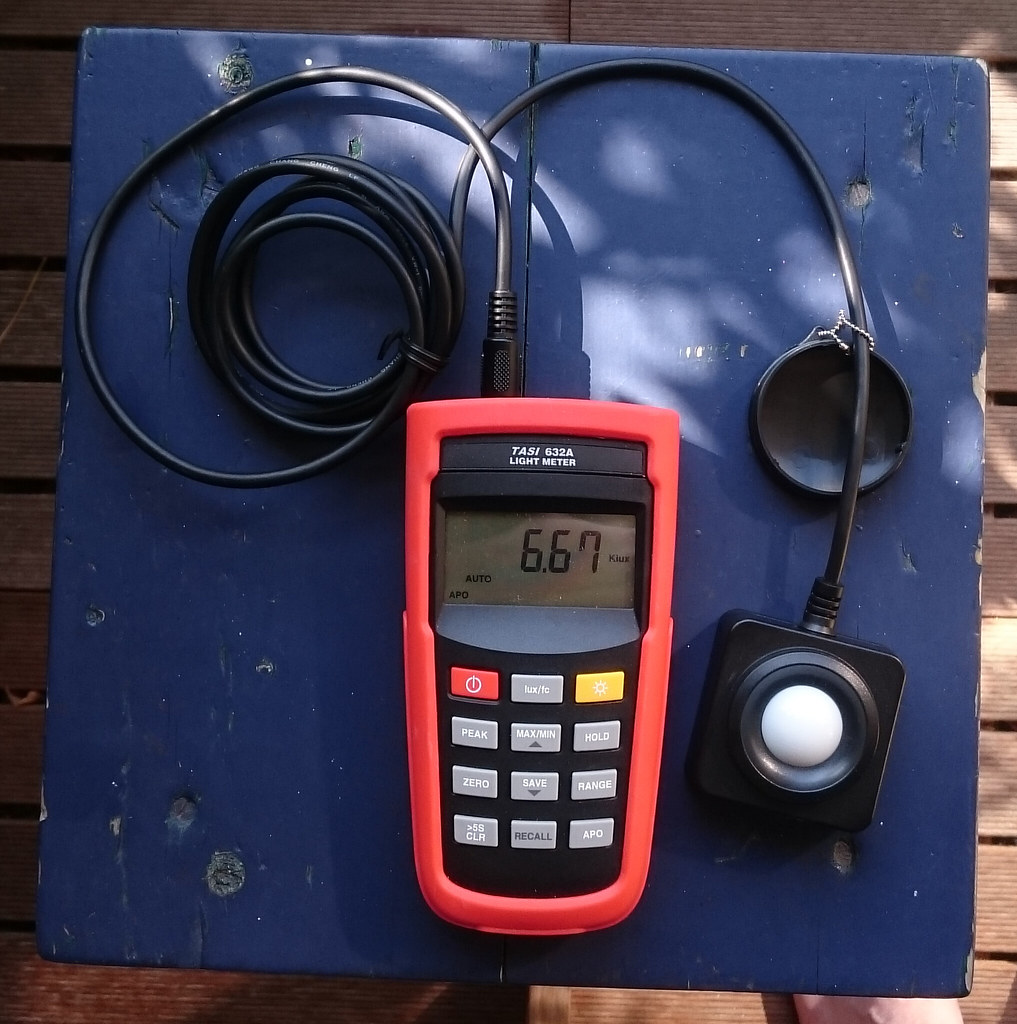
Not long ago clemence discussed with me buying this luxmeter, and looking at the meter and specifications I got enthousiastic and hopeful that this could actually be a good chinese luxmeter, or actually taiwanese, for a reasonable price. Especially the claim of a spectral accuracy of 8% caught my attention, in the first place because they actually listed a number for that accuracy (instead of the usual vague claim that the spectral reponse is in accordance with the human eye response (photopic) curve, even Extech does not tell you more than that), but also because 8% is really good. Still a bit unsure because the Tasi brand also sells those 16 dollar luxmeters that do not look really different from this one, I bought one for $168 here: https://www.aliexpress.com/item/TASI-632A-Digital-Light-Meter-USB-DC-Power-Luxmeter-Meters-Digital-LCD-Backlight-illuminometer-Storage-128/32791440073.html
Yesterday I got it in the mail and luckily I had time for tests. :-)
The first impression was not good, it came wrapped in the usual plastic foam , in which I found an all too familiar crushed thin white cardboard box. In that box was, loose without retail packaging, the luxmeter, a sensor with a lead, a USB cable (the meter uses the outdated mini-USB connector) and a 1-page photocopied manual.
Not let down by the packaging, as a flashaholic I'm used to sometimes very good stuff packaged like that :) , I inspected the outside of the luxmeter: thick plastic and a thick rubbery bumper, big sturdy sensor with a massive lead, the connector looks like the well-proven connector commonly used in personal computers (some assembly damage to the housing there). This luxmeter looks ready for some heavy duty use! ![]()
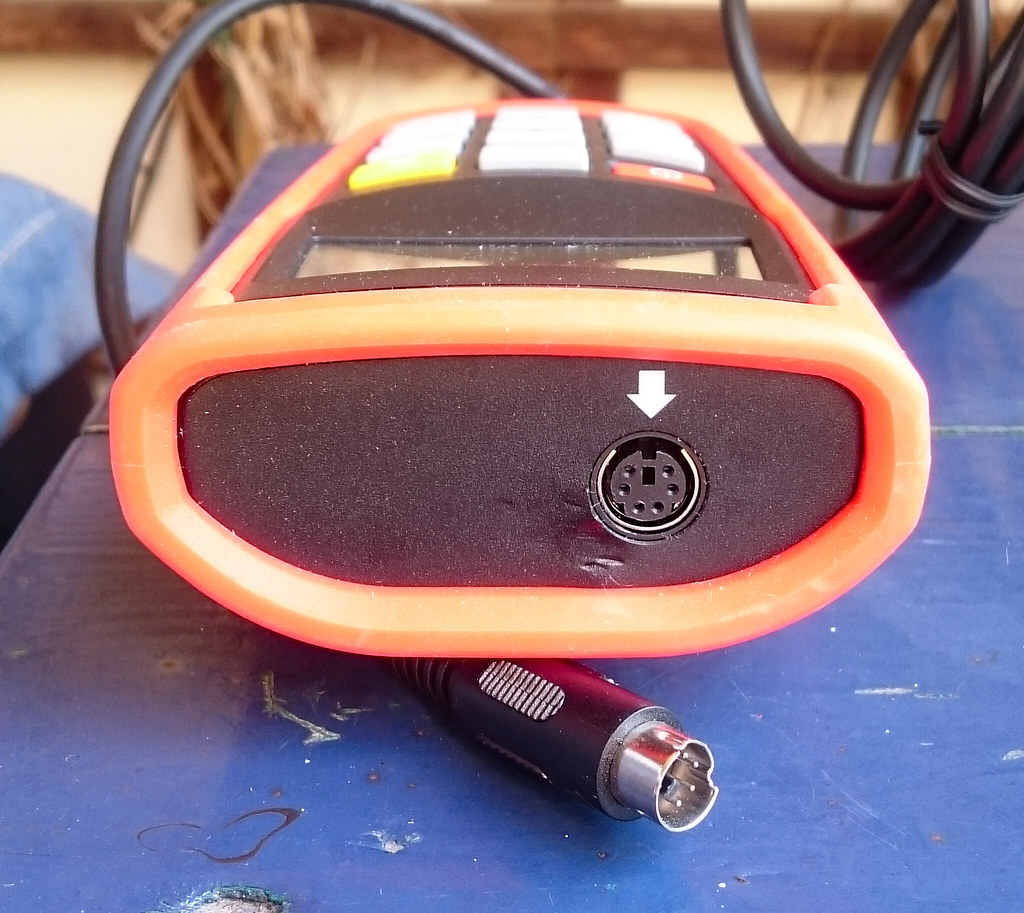
Here's (most of) the manual. Quite informative but still sloppy, with some unclear language and repeats:
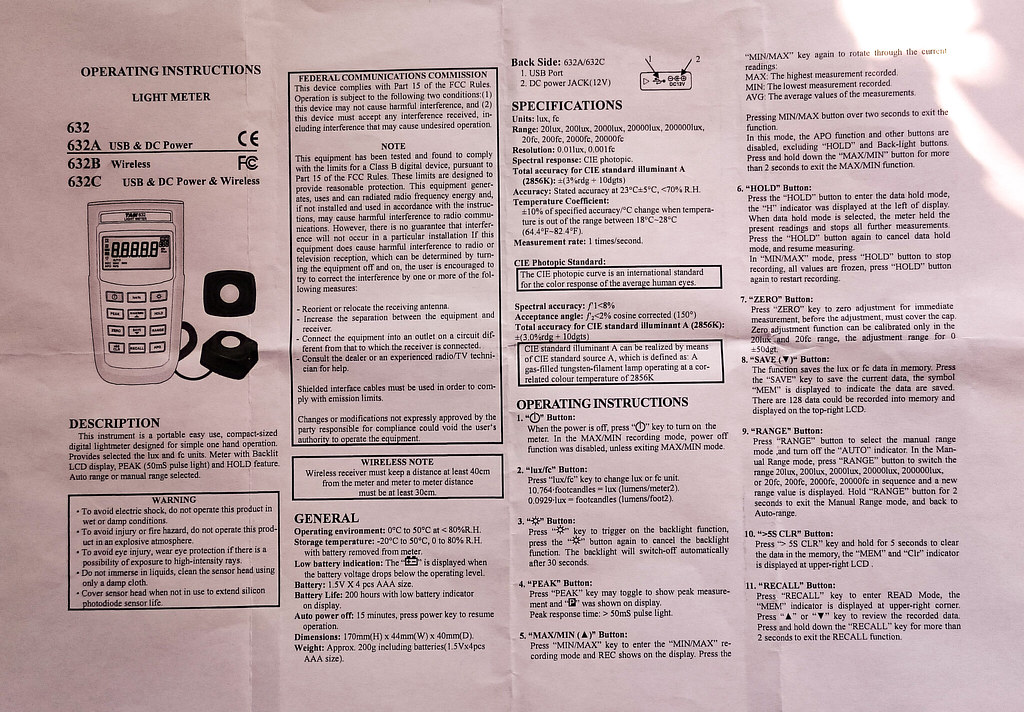
The screen is nicely back-lit (push button for that) with a time-out of 30 seconds, which is useful. The readings are slow compared to my Mobilux: just 1 read-out per second. This can be annoying when you do many quick measurements or monitor fast events.
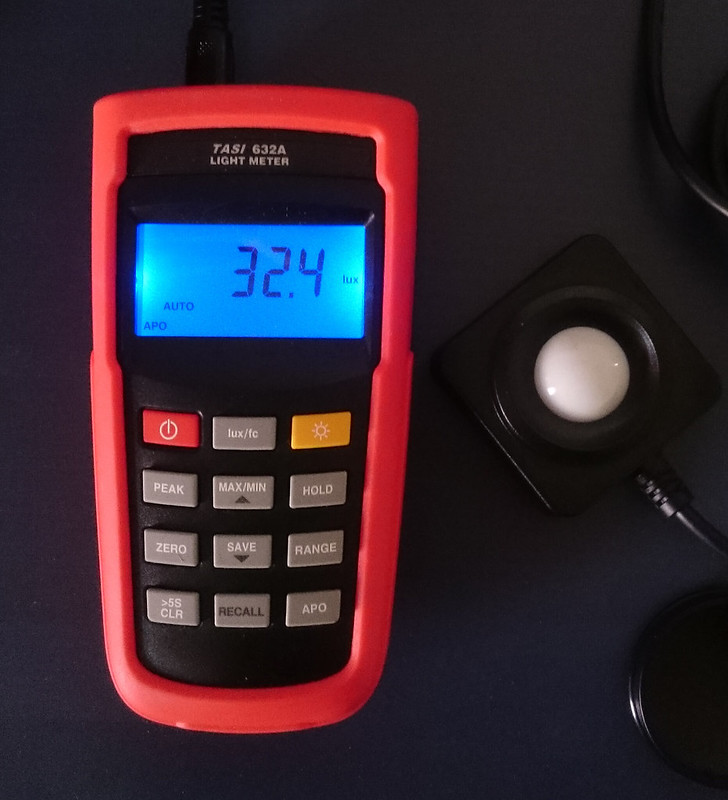
I will not go further into the operation, and also not into how to use the USB-connection because I'm not very good at that ![]() . Perhaps clemence can chime in in this thread with some details if he has received his copy.
. Perhaps clemence can chime in in this thread with some details if he has received his copy.
EDIT 7sep2017: Clemence evaluates the connection to a computer in post #11, thanks!
My first and only interest is: how good is the spectral response and calibration, and does it work well for how we flashoholics use a luxmeter.
Here is some testing against two other luxmeters that I own, my top-range Mobilux class A luxmeter, and the über-cheap (12 dollar) Uni-T UT-383 luxmeter.

(I had done some checks on the Uni-T meter before, posted in the Mitko-thrower thread, these tests are in line with those measurements)
What I did is comparing the readings of the three meters in a as precise as possible way for a wide variety of natural and artificial light sources. I did not pay special attention to the linearity of the response (i.e. does the meter correctly measure 10 times as much if it sees 10 times as much light?) because thusfar I have not seen great linearity problems in even the cheapest luxmeter that I have.
Here's the rough data FWIW:
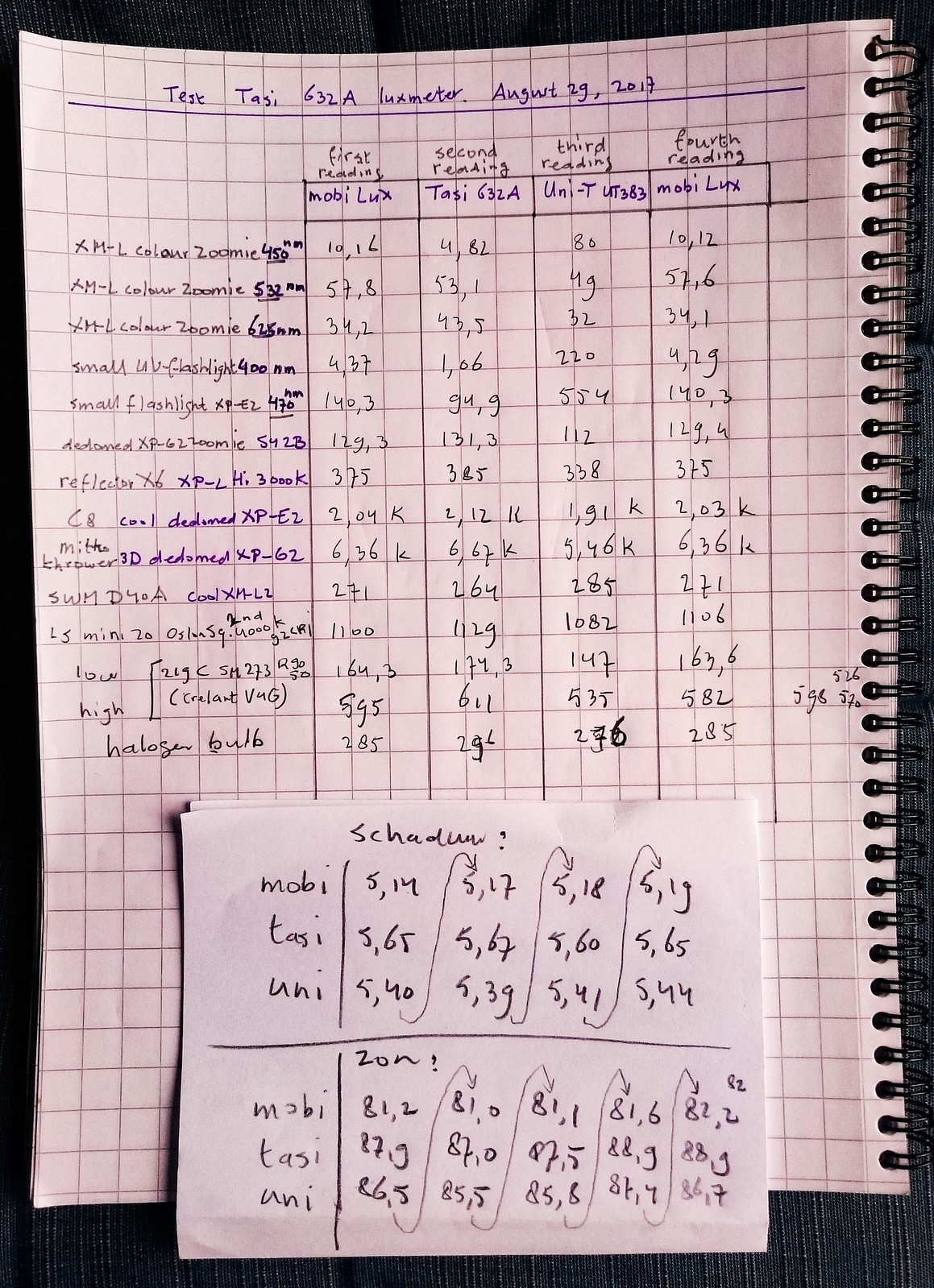
For each source I placed the sensor on the exact same spot in the beam, took readings from all three luxmeters starting with the Mobilux, and ended with a second reading with the Mobilux to see any output deviation. All light sources were not truly constant but constant enough for the comparison.The actual values of the numbers are not relevant here, often medium settings were used, and I used small light sources at closer distance. What matters is the type of light source and how different the luxmeters read the light source.
On the separate piece of paper are readings outside, first set in the shadow of the overhang on my balcony, second set aimed directly at the morning sun. Because sunlight varies per second (there's always some varying haze in the air here), I did four and five sets of readings alternating the luxmeters. This gave a good average IMO.
Here's a table in which the above measurents of the Tasi and Uni-T meters are represented as a percentage of the Mobilux reading.
Table: % output reading deviation compared to the mobiLux meter |
mobiLux luxmeter |
Tasi 632A luxmeter |
Uni-T UT383 luxmeter |
| 50W halogen bulb | 0 | +4% +1% | -3% |
| outside, clear sky in the shadow | 0 | +10% +7% | +4% |
| outside, clear sky aimed at the sun | 0 | +7% +4% | +6% |
| Crelant V4G with Nichia 219C 2700K 92 CRI | 0 | +6% +3% | -11% |
| X6 with XP-L Hi 3000K | 0 | +3% 0% | -10% |
| Lucky S. mini20 with Oslon Square 4000K 92 CRI | 0 | +3% 0% | -2% |
| Supwildfire thrower with dedomed XP-G2 3D | 0 | +5% 2% | -14% |
| Supfire F5 zoomie with dedomed XP-G2 S4 2B | 0 | +2% -1% | -13% |
| Ultrafire C8 with dedomed cool white XP-E2 | 0 | +4% +1% | -6% |
| SWM D40A with cool white (6500K ?) XM-L2 | 0 | -3% -6% | +5% |
| XM-L colour zoomie, 625nm red die | 0 | +27% +23% | -6% |
| XM-L colour zoomie, 532nm green die | 0 | -8% -11% | -15% |
| small flashlight with 470nm ice-blue XP-E2 | 0 | -32% -34% | +295% |
| XM-L colour zoomie 450nm blue die | 0 | -53% -54% | +690% |
| flashlight with 400nm purple generic chinese led | 0 | -76% -77% | +5000% |
So one of my fears appears not true, the spectral response is quite different from the cheap Uni-T meter, and better. Over the whole spectrum it does not differ dramatically from the MobiLux meter that I use as my standard of a good spectral response (I'm sure that is not perfect either but the spectral response from the MobiLux meter is the closest I have to the defined spectral response that is the basis of the lux), while the Uni-T meter severely over-reads in the blue region of the spectrum. The Tasi meter compared to the MobiLux meter under-reads the blues, but not dramatically. It does cause some under-reading of very cool white leds, like from my SWM D40A, but in general the white light sources are measured well.
For all white light sources, except very cool ones, the Tasi-meter reads higher than the MobiLux meter so part of the deviation can be a overall calibration difference. If you let the tasi-meter read 3% lower than what it does, the general comparison to the MobiLux meter becomes better, apart again from the very cool white leds. I substracted 3% reading to get the green numbers. This is relevant for me because I want to use the Tasi-meter for an integrating sphere, in which the absolute calibration of the luxmeter is irrelevant anyway.
I'm not sure yet how to interpret the daylight measurements, they seem somewhat confusing but I may just have to think more about it.
As a small additional test I checked the readings of the three luxmeters pointed straight at the sun and at the (randomly chosen) angle of 55 degrees. No large differences here, at 55 degrees compared to nicely perpendicular to the sun, the Mobilux reads 64%, the Tasi 67%, the Uni-T 62%. No significant reading differences are expected from this in any use I can think of.
Conclusion.
This Tasi 632A luxmeter is clearly not perfect, but I think it is value for money if you are a bit more serious about your flashlight numbers, it is built well but especially the spectral response (=optical filter in front of the light sensor) is some levels better than that of the cheap chinese luxmeters, although the blues seem to read a bit low (relevant for very cool leds). Perhaps the light sensor is based on one of the newer ambient light sensors made for mobile phones that I found to have very good specifications for spectral response (look for the newest Texas instruments ALS!). I have never owned any other mid-range luxmeters like the various Extech meters, but the little information I do have suggests that the spectral response of this Tasi is better than those (don't kill me if I'm wrong).
If you are not that serious about the numbers that your flashlight produce but would like ball-park figures that still give way more information than what your eyes can see, go for a cheap luxmeter like the Uni-T UT383, who cares about 15% :party:
